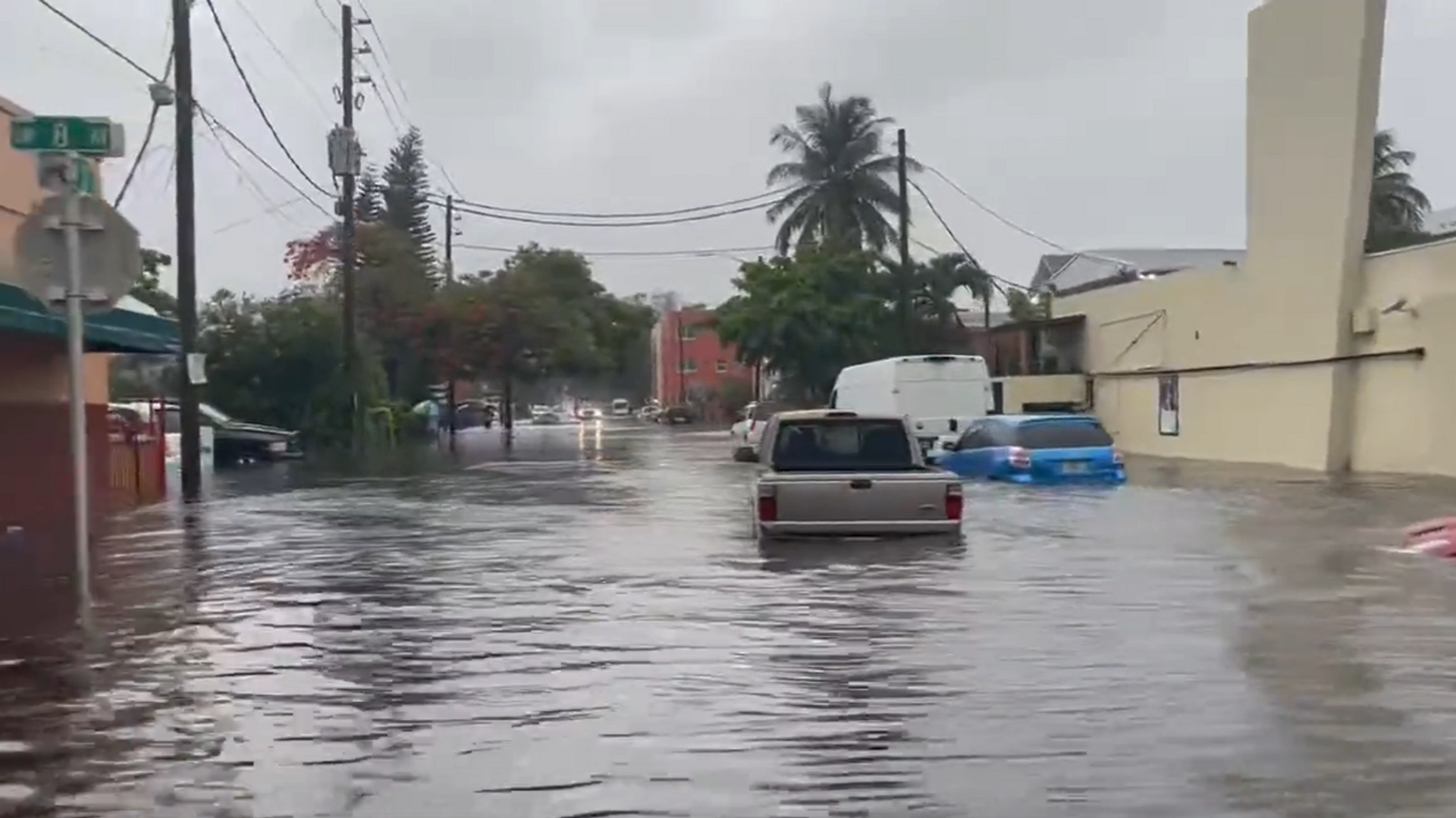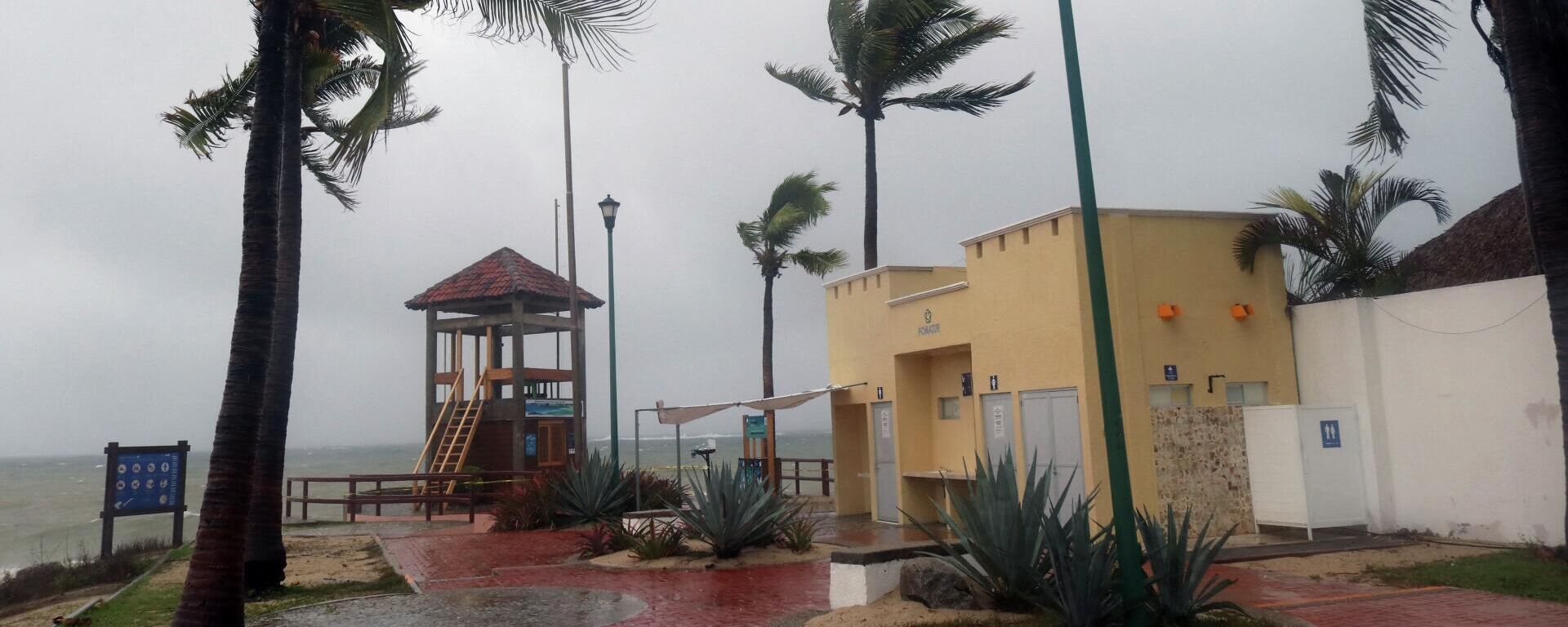South Florida Flooded Following Tropical Storm
Subscribe
The first named storm of hurricane season, Hurricane Agatha battered Mexico on June 1. Agatha formed in the Pacific and caused extreme flooding and landslides. According to the governor of Oaxaca, Agatha left at least 10 people dead and 20 more missing. Now the first tropical system of the Atlantic season is wreaking havoc on Miami, Flordia.
The remnants of Hurricane Agatha, upon crossing Mexico, regained strength in the Gulf of Mexico and became a tropical disturbance before colliding with Florida. The storm brought extreme flooding to the state, with some areas in South Florida receiving as much as 11 inches of rain.
Heavy flooding in Brickell, Miami. @lukedorrisWPLG @NWSMiami @weatherchannel @WeatherNation pic.twitter.com/pRWim5s6y4
— Gonçalo (@goncalomg96) June 4, 2022
Cars were seen almost fully submerged in flooded Miami streets on Saturday. The flood prompted first responders to use high water rescue to transport people to safety and at least 12 to 20 calls were made to one towing company, Prestige Auto Towing in Miami, requesting help for stuck vehicles.
“A lot of flooding in Brickell, downtown and North Miami,” said Robert Hernandez, an employee of Prestige Auto Towing. “A Ferrari was floating. A lot of water damage. A lot of cars (with) water damage.”
To locate your stranded vehicle, call the @MiamiPD non-emergency number at 305-579-6111. Please have the make and model of the vehicle and the location where it was left. pic.twitter.com/O9wSTkzxky
— City of Miami (@CityofMiami) June 4, 2022
As the tropical disturbance moves into the Atlantic Ocean basin it will be classified as Tropical Storm Alex, according to the National Hurricane Center in Miami. The storm’s 40 mph winds did not meet the threshold needed to be classified as a Tropical Storm, however, it did bring severe flooding and some power outages.
The tropical disturbance left the residents of South Florida with flooding, power outages, and stranded and/or flooded vehicles. Miami-Dade Fire and Rescue responded to the flooding by using high water vehicles to relocate stranded individuals to higher ground according to their Twitter account around noon on Friday.
#MDFR crews are utilizing a high water vehicle in NE Miami-Dade assisting people affected by flooding. Those impacted have been picked up & relocated to higher ground. We continue to urge our community to stay indoors & to report flooding in their neighborhoods by calling 3-1-1. pic.twitter.com/wCWVMDqirU
— Miami-Dade Fire Rescue (@MiamiDadeFire) June 4, 2022
The storm crashed down on Miami for over 72 hours and brought 10 to 11.6 inches of rain in other parts of South Florida.
According to PowerOutage.us by 9 a.m. on Saturday morning, Miami-Dade County had 4,083 outages which dropped to 1,310 by 11:30 a.m. In Collier County where the city of Naples is located, 226 power outages were reported by 9 a.m., though, almost all of which were resolved by 11:30 a.m.
“Normal down here is where there’s a heavy storm, you can expect slight flooding,” said Kash Kashmiri, 30, who works at Total Nutrition in Brickell. Kashmiri said he worked through the flooding, gathering products for customers while only allowing cash transactions at the front door. “Any kind of tropical storm, you can expect flooding for sure.”
The storm in South Florida, which has moved away as of Saturday evening, marks the beginning of Atlantic Hurricane Season, which typically runs from June 1 through November 30. The National Oceanic and Atmospheric Administration (NOAA) has warned that there will be an “above normal” Atlantic hurricane season this year.
This hurricane season could be the seventh consecutive above-average hurricane season, according to forecasters at NOAA. The 2022 hurricane season will bring to the Atlantic a range of 14 to 21 named storms with 39 mph wind speeds or higher (of which 6 to 10 could become hurricanes), as well as 3 to 6 major hurricanes with wind speeds of 111 mph or higher.
The NOAA says these “above normal” hurricane seasons are the result of several factors including ongoing La Niña that is predicted to continue, rising temperatures across the surfaces of the Atlantic Ocean and the Caribbean Sea, and a strengthening west African monsoon.


